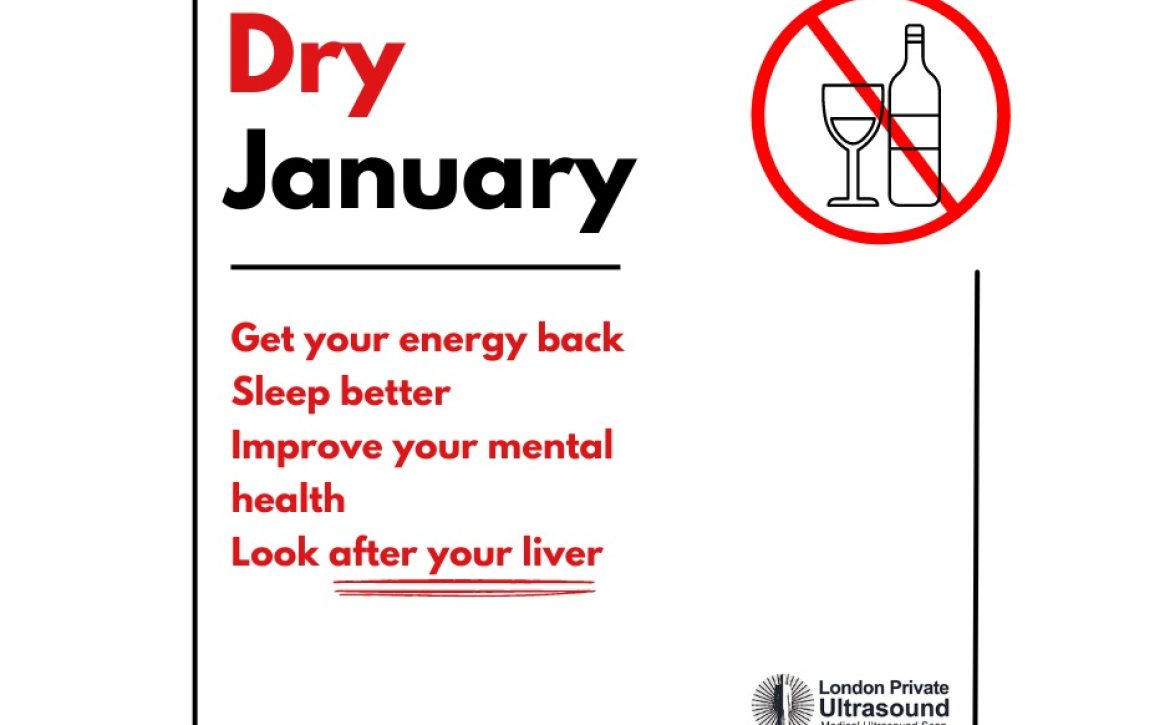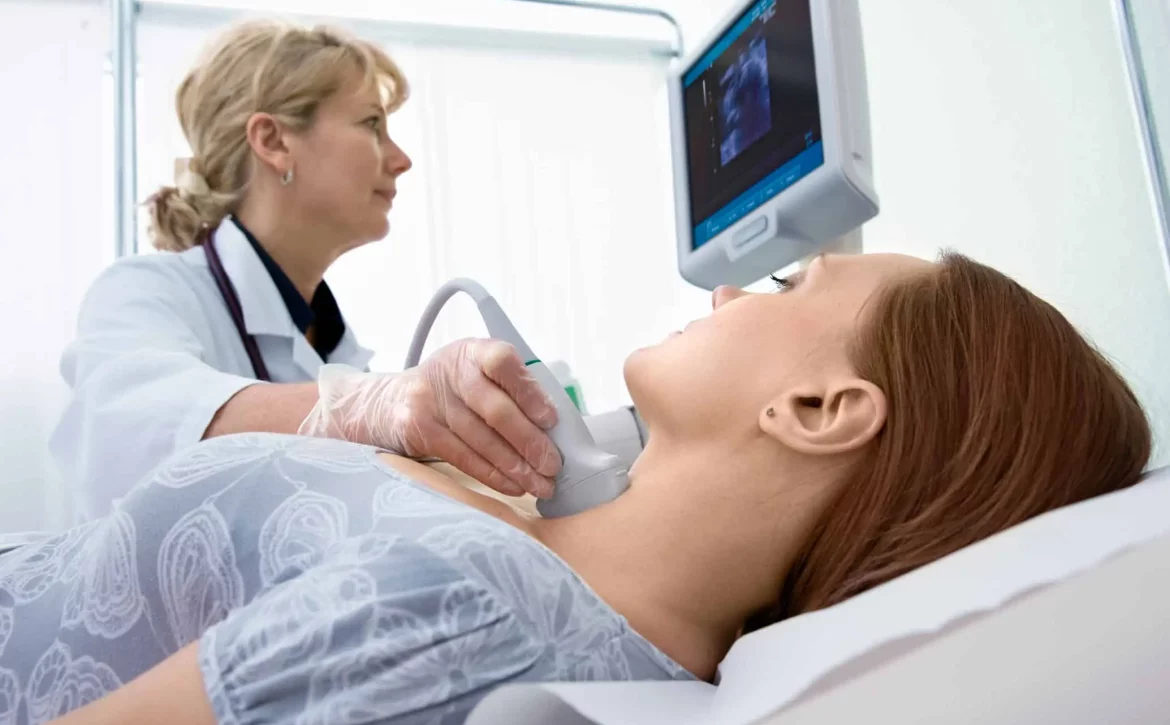Celebrating ten years of Dry January
Committing to Dry January
January is when you should start fulfilling those New Year’s Resolutions. And maybe one of them was to consume less alcohol. We’re with you on this one. You might wonder about the rules of this challenge. It’s pretty simple—no alcohol from New Year’s Day or at least the 2nd of January until the 1st of February.
Not only will it be a fantastic way to regain energy, sleep better, and save money, but it will also help you be kind to your liver.
How many Alcohol units per week?
It is usually recommended not to drink more than 14 units of alcohol per week. Even though your liver can handle small amounts of alcohol, it can still affect it in many ways. It might be possible that you’re damaging your liver, and you don’t even know about it. If you feel any pain on the right side of your abdomen when drinking alcohol, you should have an abdominal ultrasound scan.
It is also best to allow yourself at least 1-2 days alcohol free per week.
Look after your liver.
The best way to check on your liver is to have an ultrasound scan which can rule out any abnormality, fatty liver disease or other alcohol-related liver diseases. If you don’t want to wait 6+ weeks for your hospital appointment, book a private abdominal ultrasound scan in our Private Ultrasound Clinic in Welbeck Street, just a few mins walk from Bond Street tube station. We offer many packages to help you assess your liver health including a liver scan, abdominal scan and blood tests and can provide you with a verbal summary during the appointment as well as a written report. We can provide you with a KPA number, which will allow you to determine whether your liver health has improved or declined upon your second visit. We would recommend the liver elastography for a KPA assessment of your liver.
We offer same-day, weekend, and evening appointments for an affordable price.
What is a kPa score?
The health of your liver and the elasticity of the liver is typically measures on a scale of 1-14+ with kilopascals (kPa).
The measurement score allows us to determine the appropriate next steps and generally the scores will be provided to assess the following states – little or no scarring, moderate scarring, intense scarring and irreversible scarring. It is important information to know as there is much you can do to heal the liver and as such, one reason why we encourage all our patients to observe Dry January and take all the lifestyle steps to improve your general health and reduce toxicities, particularly those of the liver.
Your liver plays a pivotal role in your body’s detoxification processes and overall health. Excessive alcohol consumption can put significant strain on this vital organ, potentially leading to liver diseases such as fatty liver disease, hepatitis, or even cirrhosis. Our advanced ultrasound services can provide crucial insights into your liver’s health, providing you with the optimal chance for a full recovery or control of your liver health.
Top tips for succeeding your Dry January Challenge
During Dry January, embracing alcohol-free alternatives can be a refreshing and health-conscious choice. Swap your usual alcoholic beverages for a variety of non-alcoholic options, such as alcohol-free beers, mocktails, or herbal teas.
Experiment with different flavours to find what satisfies your taste buds and invest in some cocktail kits to get creative and focus the mind on something more than just the drinking of it!
Meeting friends, can often mean drinking alcohol and if you feel you may crumble in this situation perhaps try arranging less tempting activities like coffee catch-ups, hiking, or attending cultural events. Opt for activities that don’t revolve around alcohol to create a supportive environment.
The other vital element is taking up exercise, this can also be a daunting prospect if it has been years since you set foot in the gym or met-up for your weekly game! Enhancing blood flow and circulation, incorporating regular exercise into your routine, focusing on activities like brisk walking, cycling, or yoga all help your liver to recover.
Stay well-hydrated by drinking plenty of water throughout the day, aiding in the detoxification process. Additionally, prioritise a balanced diet rich in antioxidants from fruits, vegetables, and whole grains. Consider incorporating foods like ginger and garlic known for their circulation-boosting properties. Adequate sleep is crucial for overall health, so ensure you get quality rest each night.
Finally, take time for relaxation through practices like deep breathing or meditation to manage stress, supporting both physical and mental well-being during your alcohol-free month. Perhaps induce a more relaxing environment by indulging in a little shopping for comforts, candles and planning your holidays!
Drinks making Alcohol free easy
-
Non-Alcoholic Beers: Many breweries now produce alcohol-free versions of their beers. Brands like Heineken 0.0, Budweiser Zero, and Clausthaler Original offer an alcohol-free option with the same beer flavor. For those of you more on the craft beer scene, the options will not disappoint – try this link to the independent and their top selections of low and no-alcohol beers.
-
Non-Alcoholic Wines: There are various alcohol-free wines available that mimic the taste and complexity of traditional wines. Look for brands such as Ariel Vineyards or Torres Natureo, most supermarkets offer a particularly good selection to choose from – you may even find a alcohol free English sparkling wine to celebrate in style through Dry January.
-
Mocktails and Mixers: Some companies specialize in crafting alcohol-free versions of classic cocktails. Brands like Seedlip offer a range of non-alcoholic spirits that can be used to create sophisticated mocktails. Additionally, there are non-alcoholic versions of popular mixers like tonic water or ginger beer.
-
Non-Alcoholic Spirits: Beyond traditional mocktails, some brands focus on creating alcohol-free alternatives to spirits like gin, vodka, or rum. Examples include Seedlip Grove 42 (citrus-focused) or Ritual Zero Proof (gin alternative).
-
Soft Drinks and Infused Waters: Explore a variety of artisanal sodas, flavored sparkling water, and infused waters. Brands like Fentimans, Fever-Tree, or LaCroix offer unique and refreshing options.


